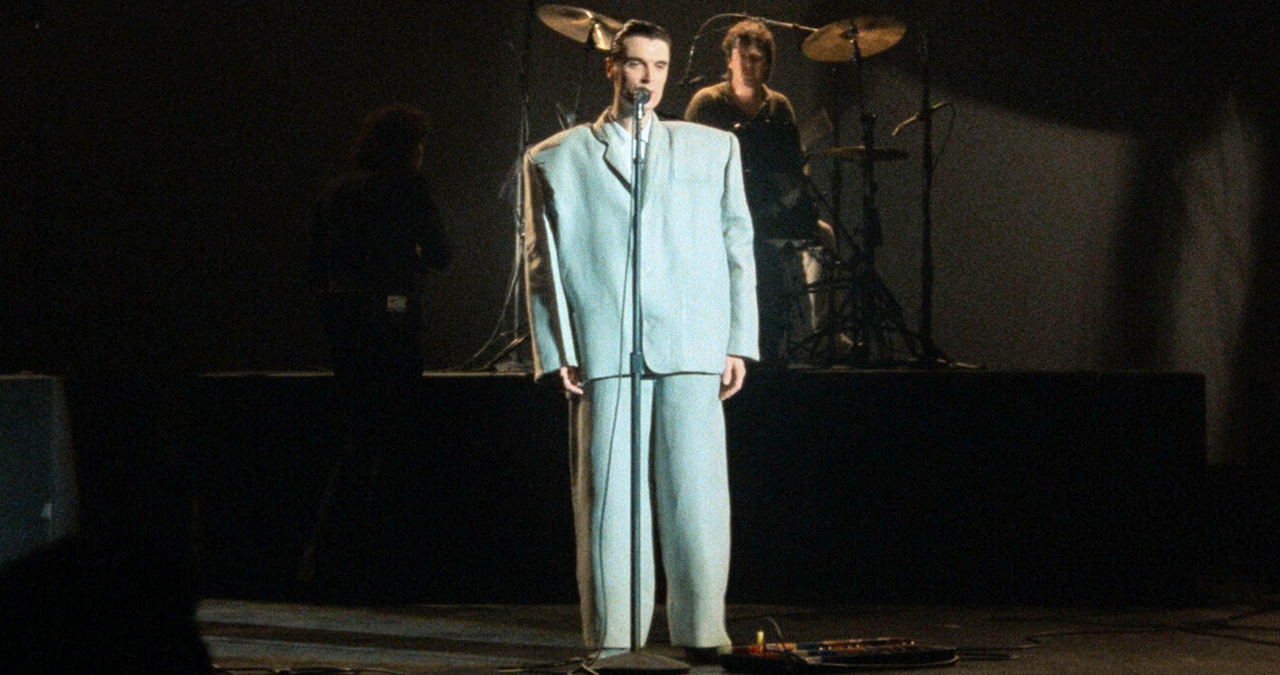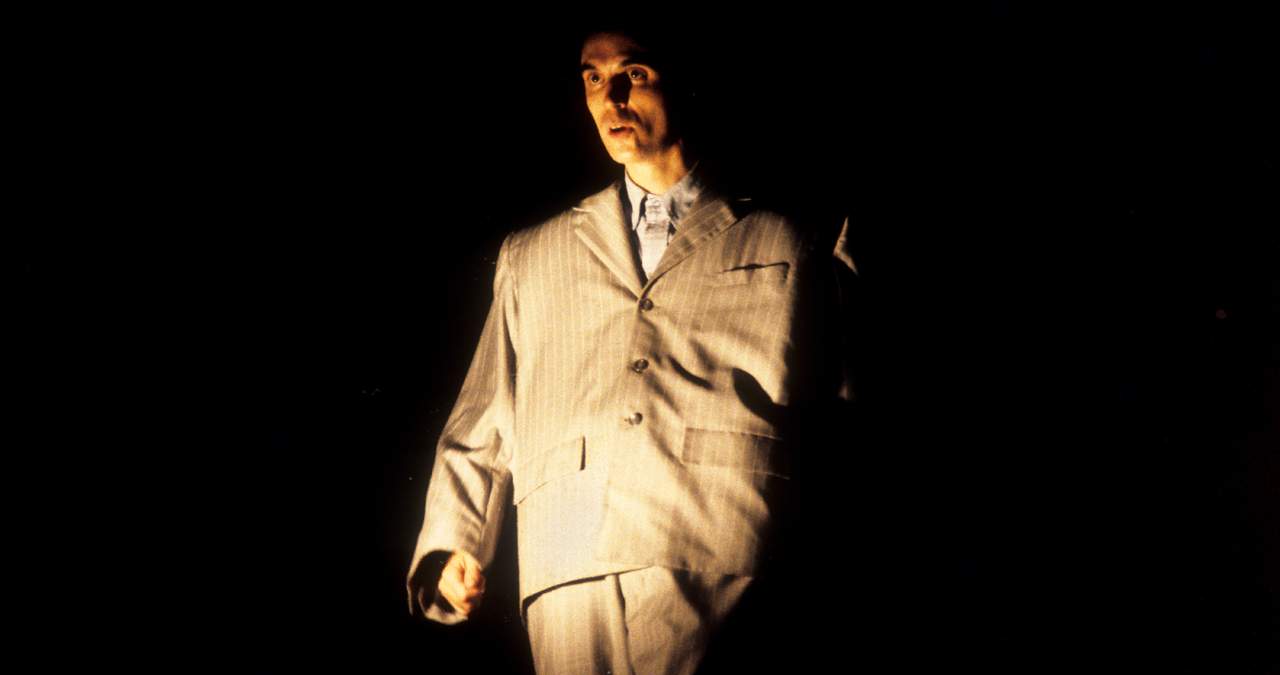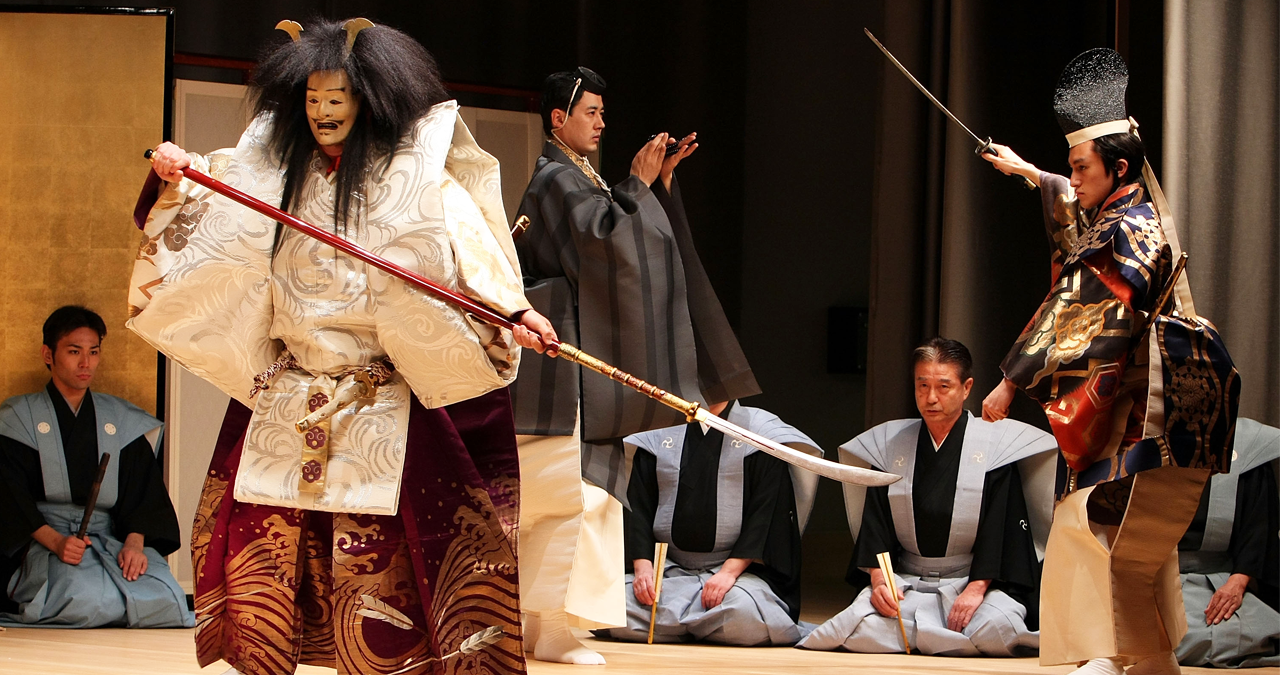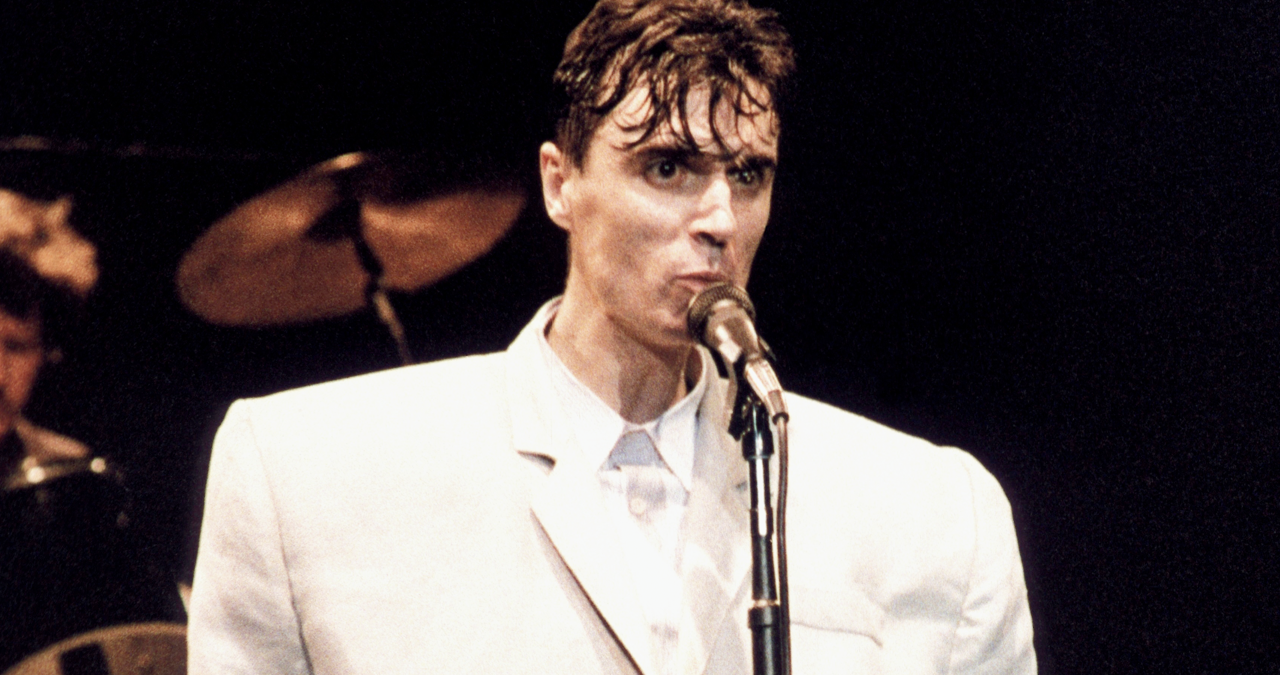“That will be the inscription on my tombstone - 'Here lies the body of David Byrne. Why the big suit?'” How the Talking Heads' frontman's oversized tailoring defined his most iconic performance
The gigantic suit look became one of Byrne's visual trademarks, but what lay behind his choice to wear it?

A concert film that any self-regarding music fan should watch at least once, Stop Making Sense regularly, and rightfully, sits at atop lists of the greatest live concert films ever captured.
Jonathan Demme’s film documented Talking Heads at the summit of the twin peaks of commercial success and artistic vigour. Ostensibly touring their fifth record, Speaking in Tongues (and its instant classic singles, This Must Be the Place (Naive Melody) and Burning Down the House), the tightly choreographed Talking Heads live experience had been fine-tuned into a jaw-dropping exhibition of the band's stature as ultra-expressive live performers, as well as a rock solid musical unit.
The core band, drummer Chris Frantz, bassist Tina Weymouth, lead guitarist Jerry Harrison and the irrepressible vocalist David Byrne, imbued performance art into an ever-evolving live stage show.
Beginning with just the lone figure of David Byrne wielding an acoustic guitar and accompanied only by a ghetto blaster pumping out a drum machine beat, the show gradually evolved in both staging and in terms of the number of musicians on-stage. It seemed to reflect and celebrate the connected community of music, and spotlighted the complexities of the inner workings of live music performance.
“It was the most ambitious thing I’d done,” Byrne recalled in his book How Music Works. “The transparency and conceptual nature of its structure took away nothing from the emotional impact. It was tremendously gratifying."
Undoubtedly, the most memorable moment was when Byrne emerged from the shadows near the climax of the show, wearing a comically gigantic suit.
As Weymouth and Frantz kickstarted Girlfriend is Better, a paranoid-faced Byrne wide-eyed the audience, made ducking head movements and launched into the tense Speaking in Tongues highlight.

With a lyric that opens, ‘Who took the money? Who took the money away?’ Byrne’s choice to wear a ridiculously colossal power-suit during the performance of Girlfriend is Better seemed on first glance to be a conscious mockery of Reagan-era America’s commercially-motivated philosophy.
Many viewed the suit as an oversized prison for the tiny-headed Byrne within. But was this suit really a signifier for greed, and the illusion of power, taking hold of the human within it, making him dance to its tune?
While those political and satirical resonances are definitely felt, Byrne later revealed that the suit wasn’t purposefully intended to be (directly) a vehicle for commentary. “People have interpreted it as meaning like, oh, this is the archetypical businessman kind of imprisoned in his suit, imprisoned in his whole situation,” Byrne told NPR’s Fresh Air. “That might be unintentional, but it might be there. I don't deny it. But it wasn't my intention to, kind of make fun of businessmen.”
Want all the hottest music and gear news, reviews, deals, features and more, direct to your inbox? Sign up here.
Outside of these readings, the actual reality of the idea to don the big suit was first hit upon following a conversation between David and his friend, fashion designer Jurgen Lehl.
Discussing ideas for the upcoming tour, Lehl had joked to Byrne that ‘everything onstage needs to be bigger.’
Though Jurgen had been referring to the presentation of the music itself and the show's staging, Byrne was immediately reminded of an experience that took place during the band's previous tour, in Japan. Suddenly, Kehl's words took on a different, very literal meaning.
“The [previous] tour had taken us to Japan, where I went to see the traditional theatre forms: Kabuki, Noh and Bunraku,” Byrne recalled in his book How Music Works. “These were, compared to Western theatre, highly stylised; presentational is the word that’s sometimes used, as opposed to the pseudo-naturalistic theater we in the West are more used to.”

Byrne doodled an image that would serve as the suit’s starting point - a business suit that took its cues from the unreal, hyper-stylised world of Noh performance. Byrne was also struck by the idea of perfect geometric shapes, and the fundamental oddness of housing a human within one. “[In Noh] everyone wore massive, elaborate costumes and moved in ways that were unlike the ways that people move in real life,” Byrne remarked in How Music Works.
David told Entertainment Weekly that, “I realised that yes, that kind of front-facing outline, a suit, a businessman’s suit, looked like one of those things, a rectangle with just a head on top.”
The idea of distorting the performer’s appearance was also expressed in a suitably disorienting self-interview that Byrne conducted with himself (adopting a range of characters) to promote the Stop Making Sense film.
“I like symmetry and geometric shapes,” deadpanned Byrne. “I wanted my head to appear smaller, and the easiest way to do that was to make my body bigger, music is very physical, and often the body understands it before the head.”
With a concept envisioned, the actual suit was created by Gail Blacker, based on a number of drawings from Byrne. Gail was quite bemused at first by this outlandish conceit, but then figured out a way of making it work - and still allowing Byrne to perform within it.
The (grey, to match the rest of the show's performers) fabric was attached via an external frame. When trying it on, David was thrilled when he discovered that he could manipulate the suit in a way which he couldn’t if he were actually ‘wearing’ it.
Blacker later told the New York Times that making the suit a reality was more of an ‘architectural’ challenge than a typical clothing design.
“The actual suit hangs, barely touches your body,” David told Entertainment Weekly. “It’s got these giant webbed shoulder pads and a webbed girdle that you wear around your waist and pads inside that give you incredibly wide hips and no butt. So when you’re facing sideways you look normal and when you turn to face the front, you’re incredibly wide. Most of the suit isn’t even touching you; it’s just hanging from this scaffolding.”
Though used minimally during the show itself, Byrne made (what would become known as) the 'big suit' a veritable character.
Using both facial and physical movements, Byrne fully inhabited this peculiar persona, reacting spasmodically to Girlfriend is Better’s instrumental bridge section, before vibrating the fabric and undulating the material in time with the arrangement's hyper-tight rhythm section and the colourful, jagged synth sounds.
The suit magnified Byrne’s mannerisms and bizarre dance moves, giving them the exact ‘bigness' that he wanted. His total investment to making the idea work made for a riveting watch.
And it's this part of Stop Making Sense which has gone on to be the most regularly repeated on television and on the web, Byrne's electrifying big suit dance has fast becoming an instant reminder of Talking Heads’ stature as the principle art rock (read; weirdest) band in the pop music canon.
“I could wiggle a little bit and it would ripple like curtains or sheets or whatever. So you could do all these things with it,” Byrne told Fresh Air, “If I wiggled side to side, it would kind of shimmy around. I could do all these things with it that I couldn't do just by myself. It had its own properties that you can kind of activate that way. I thought it was kind of odd, kind of slightly surreal.”
Byrne lost the jacket for the following song - the band’s cover of Al Green’s Take Me to the River - distorting his appearance in a different way, with his seemingly scrawny body in a short-sleeved shirt sitting atop the massive, boxy trousers of the big suit. A red baseball cap completes the look, before Byrne, now freed from the shell of the big suit, returns to a normally-fitting outfit for the Stop Making Sense finale, Crosseyed and Painless.
With a still of Byrne clad in the big suit adorned the resulting film’s poster, and the cherished place that Stop Making Sense holds in music history, David Byrne’s big suit look has gone on to be one of the defining images that many mentally leap to first when hearing his name.
But, like many artists, the question of ‘why’ is something that Byrne himself tires of discussing.
“That will be the inscription on my tombstone - 'Here lies the body of David Byrne. Why the big suit?'” Byrne said to writer Ian Gittings.


I'm Andy, the Music-Making Ed here at MusicRadar. My work explores both the inner-workings of how music is made, and frequently digs into the history and development of popular music.
Previously the editor of Computer Music, my career has included editing MusicTech magazine and website and writing about music-making and listening for titles such as NME, Classic Pop, Audio Media International, Guitar.com and Uncut.
When I'm not writing about music, I'm making it. I release tracks under the name ALP.
You must confirm your public display name before commenting
Please logout and then login again, you will then be prompted to enter your display name.

